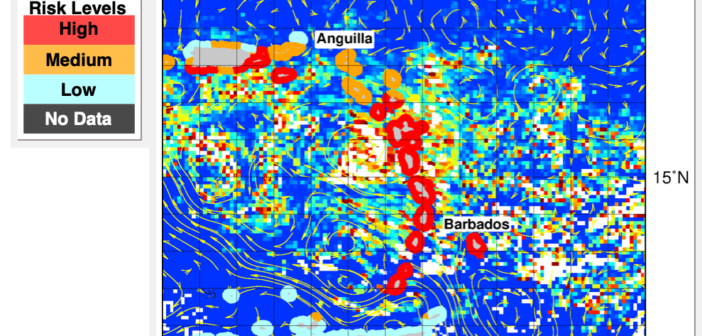A 5,000-mile-long blob of sargassum algae is floating in the Atlantic, heading from Africa to Florida and the Gulf of Mexico, fouling propellers, clogging sea strainers, and entangling fishing lines along the way.
Then, when it washes up on beaches, it can pile up several feet high, releasing a noxious odor and derailing the tourist trade everywhere from Caribbean islands to Miami.
Scientists have been studying and measuring the Great Sargassum Belt since 2011. The floating brown blob has been getting bigger and bigger every year, and it doubles in size every month from November to January.
When they measured it this January, they said it was the largest ever, and it would continue to grow. Indeed, the National Oceanic and Atmospheric Administration says the sargassum blooms will continue to disrupt the Caribbean until October.
Last year, the U.S. Virgin Islands declared a state of emergency when they were hit by sargassum. Barbados hired hundreds of dump truck to clear the beaches. The problem is that when it reaches shore, the matt of brown sargassum decays in the sun and releases hydrogen sulfide, producing a smell like rotten eggs. It also can choke mangrove habitats.
In the water, the sargassum blob can provide a floating habitat for turtles, crabs and shrimp. It also soaks up carbon dioxide.
If the blob is heading in your direction, it’s like a hurricane; there’s not much you can do except get out of the way.
Scientists aren’t sure why the sargassum blob is growing. They suspect that phosphorus and nitrogen washes into rivers (Congo, Amazon, Mississippi) as runoff from fertilizer and then flows into the oceans. Algae feed on phosphorus and nitrogen. Stronger storms also stir up more seaweed. Read more:
https://www.cnn.com/travel/article/seaweed-sargassum-florida-caribbean-scn/index.html




